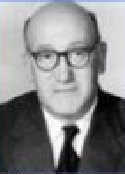Atomic Clocks Coming and Going
von Louis Essen
Atomic Clocks Coming and Going
Louis Essen
In: The General Science Journal, 1977
The results obtained by Hafele and Keating1 are so important that they merit a more critical examination than that made by W. B. in Nature. 1 He gave the final result that the clocks lost 59 ± 10 ns** during their eastward flight and gained 273 ± 7 ns during their westward flight. These results correspond to frequency changes of – 25 )( 10-.4 and 94 )
( 10-.4 respectively, with limits of error of 4 X 10-.4 and 3 )( 10-14 , and indicate the use of clocks of unusually high stability. The time difference from standard time of the four clocks used are shown graphicaJIy in Figure 1 of the authors‘ paper; and it is clear that they varied in frequency by amounts which are normal for such clocks. In particular three of them suffered changes of about I part in 1012 during the eastward flight which persisted after the flight. It is necessary to know when these changes occurred before any conclusions can be drawn about the possible changes caused by the flight itself; but by a fortunate chance the persistent changes are in opposite directions for different clocks and on the average nearly cancel out. If we can assume with the authors that they occurred at the mid-point of the flight, the results for the individual clocks, as read from the graphs are then as shown in Table 1.
.
———————————————————-
Siehe auch vom Autor in diesem Blog:
The Special Theory of Relativity: a critical Analysis
.
- 1. September 2013
- Artikel
